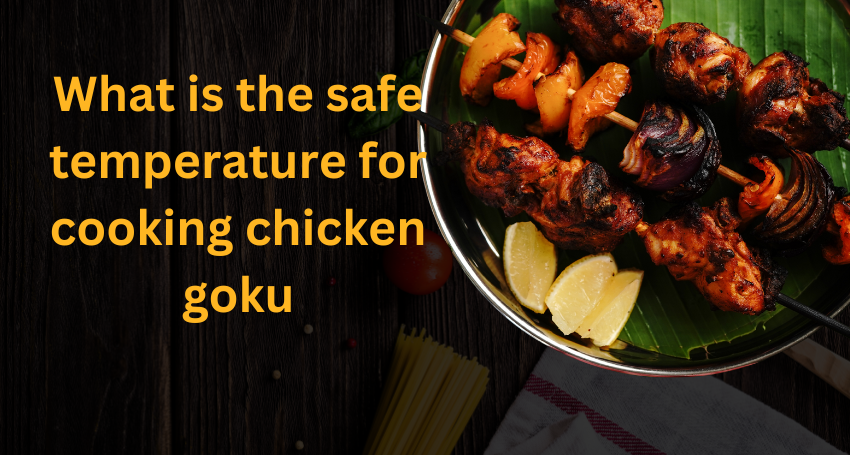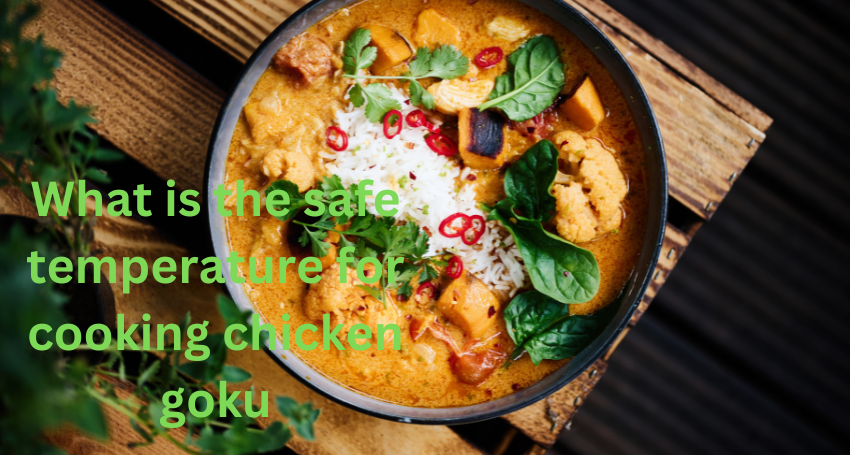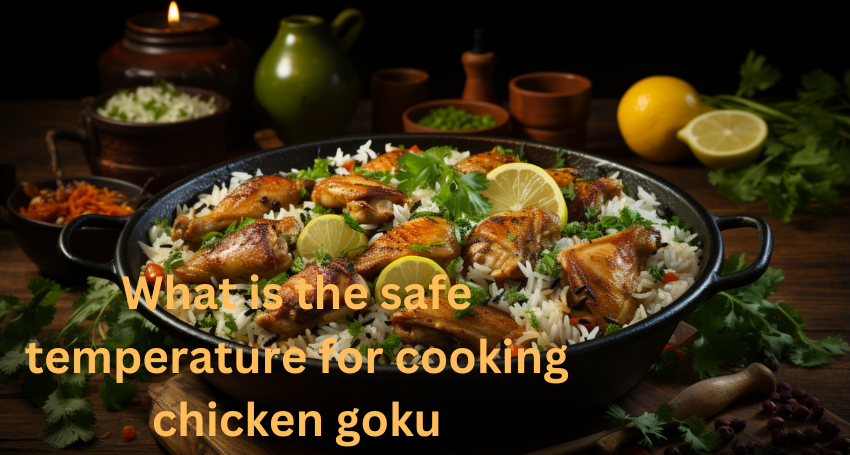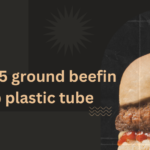Cooking fowl is a mission that seems trustworthy but entails crucial steps to ensure protection and taste. Achieving the proper temperature is paramount, as undercooked chicken can harbor dangerous microorganisms like Salmonella and Campylobacter. This article delves into the science of cooking fowl thoroughly, explores various cooking techniques, and offers sensible guidelines to ensure your bird is each safe to eat and delicious.
The Importance of Cooking Chicken to the Right Temperature
The secure inner temperature for cooked chook, as endorsed by the United States Department of Agriculture (USDA), is a hundred sixty five°F (74°C). At this temperature, harmful bacteria are correctly killed, making the fowl safe to devour. This applies to all components of the chicken, including breasts, thighs, wings, and ground bird.
Understanding Foodborne Illnesses
Cooking fowl to an appropriate temperature is critical to avoid foodborne illnesses. Bacteria like Salmonella and Campylobacter are commonly found in uncooked chicken. These microorganisms can cause excessive gastrointestinal misery, which include signs along with nausea, vomiting, diarrhea, and belly ache. In intense cases, these infections can lead to extra severe health problems, particularly in young kids, the aged, and people with weakened immune structures.
The Science Behind Cooking Temperatures
When chicken is cooked, the warmth reasons proteins inside the meat to denature, or change shape. This denaturation is what reasons the beef to organize up and trade color from pink to white or brown. The process of killing microorganisms additionally involves denaturing the proteins that make up the bacterial cells. However, absolutely changing the color of the beef does now not assure that it has reached a safe temperature at some point of.
Using a Meat Thermometer
The most dependable way to ensure hen has reached a safe temperature is by using a meat thermometer. Insert the thermometer into the thickest part of the chook, averting bones, as they are able to give a misguided studying. The thermometer ought to study at least one hundred sixty five°F (seventy four°C).
Cooking Methods and Safe Temperatures
Different cooking strategies can have an effect on how quickly and frivolously he reaches the safe temperature. Here are some not unusual techniques and tips for every:

-
Roasting or Baking
Roasting or baking chook within the oven is a popular method. Preheat your oven to the desired temperature, normally between 350°F (one hundred seventy five°C) and 425°F (220°C). Place the hen on a rack in a roasting pan to allow air to move. Check the inner temperature with a meat thermometer to make sure it has reached one hundred sixty five°F (seventy four°C).
-
Grilling
Grilling chicken adds a delicious smoky taste, but it calls for careful attention to temperature. Preheat the grill to medium-excessive warmth. Cook chicken pieces over direct heat, turning now and again to keep away from burning. Use a meat thermometer to check the temperature, specifically near the bone, wherein the meat takes longer to cook dinner.
-
Frying
Frying hen, whether or not in a pan or deep fryer, cooks the meat quickly. Maintain the oil temperature between 350°F (one hundred seventy five°C) and 375°F (one hundred ninety°C). Fry the fowl until it’s far golden brown and crispy. Always check the inner temperature earlier than serving.
Four. Slow Cooking
Slow cooking is handy and ensures soft, flavorful fowl. Set the sluggish cooker to the appropriate putting, generally low or high. While sluggish cooks generally prepare dinner meals thoroughly, use a meat thermometer to verify that the chicken has reached a hundred sixty five°F (74°C).
Five. Sous Vide
Sous vide cooking includes vacuum-sealing chook and cooking it in a water tub at a particular, constant temperature. For the bird, set the sous vide to 165°F (seventy four°C) and cook dinner for a minimum of 1 hour. This method guarantees even cooking and retains moisture.
Tips for Ensuring Safe Chicken Preparation
Ensuring your hen is cooked to a safe temperature includes greater than just the cooking procedure. Here are a few additional hints:
-
Proper Thawing
Thaw chicken in the refrigerator, in cold water, or in the microwave. Avoid thawing chicken at room temperature, as this will encourage bacterial boom.
-
Avoid Cross-Contamination
Use separate cutting forums and utensils for raw hen and other meals. Wash fingers, surfaces, and utensils very well with hot, soapy water after handling uncooked hen.
Three. Resting Time
After cooking, let the chicken relax for a couple of minutes before reducing or serving. This allows the juices to redistribute and guarantees even cooking.
Four. Marinating
Marinating fowl adds flavor and may help tenderize the beef. Always marinate the bird within the refrigerator and discard any leftover marinade that has come into contact with raw chicken.
-
Storing Leftovers
Store leftover bird in airtight packing containers and refrigerate within hours of cooking. Consume leftovers within 3 to 4 days, reheating them to a minimum one hundred sixty five°F (seventy four°C) before ingesting.
Common Myths and Misconceptions
There are numerous myths and misconceptions about cooking birds that could result in risky practices. Here are some:
-
“Pink Chicken is Always Undercooked”
Chicken can every so often have a moderate red hue even when it has reached a safe temperature. Always use a meat thermometer to check for doneness.
-
“Rinsing Chicken Removes Bacteria”
Rinsing raw hen can surely spread bacteria on your sink and surrounding areas. Cooking chook to the proper temperature is the handiest manner to kill bacteria.
-
“If It Looks Done, It’s Safe”
Appearance by myself isn’t a dependable indicator of doneness. Only a meat thermometer can appropriately determine if the fowl has reached a safe temperature.
Enhancing Flavor While Ensuring Safety
Cooking a bird to a safe temperature doesn’t mean sacrificing flavor. Here are some strategies to decorate the taste whilst preserving safety:

-
Brining
Soaking chicken in a saltwater brine before cooking provides moisture and taste. Brine for several hours within the fridge for the high-quality effects.
-
Seasoning
Season hen generously with herbs, spices, and marinades. This enhances flavor and might create a delicious crust when cooking.
-
Basting
Basting fowl with its personal juices or a marinade throughout cooking continues it wet and adds flavor.
-
Using a Thermometer
Using a meat thermometer guarantees that chicken is cooked flawlessly each time, stopping overcooking and dryness.
Conclusion
Cooking fowl to the right temperature is essential for meals protection and enjoying a delicious meal. Always aim for an internal temperature of 165°F (seventy four°C), use a meat thermometer to check for doneness, and observe secure coping with practices. Whether you’re roasting, grilling, frying, or the usage of a gradual cooker, these hints will assist you put together fowl that is both safe and pleasant. Enjoy the peace of mind that includes knowing your chook is cooked to perfection and safe for everybody to revel in.
FAQs
Q: Can I cook a dinner bird from frozen?
A: Yes, you may cook dinner from frozen, however it’s going to take about 50% longer than thawed chicken. Ensure the inner temperature reaches a hundred sixty five°F (seventy four°C).
Q: Is it safe to eat when this is slightly purple?
A: Chicken that has reached an internal temperature of one hundred sixty five°F (seventy four°C) is safe to eat, despite the fact that it seems barely crimson.
Q: How can I tell if a bird is accomplished without a meat thermometer?
A: While a meat thermometer is the first-class tool, you could take a look at if the juices run clean and the meat is not pink near the bone. However, this approach is less dependable.
Q: What is the chance sector for birds?
A: The threat area for hen is between forty°F (4°C) and 140°F (60°C), wherein micro organisms can multiply hastily. Keep birds out of this temperature variety as a lot as possible.
Q: How lengthy can I store cooked chook within the refrigerator?
A: Cooked chicken may be stored within the refrigerator for 3-four days. Ensure it’s miles in an airtight field to maintain freshness.


